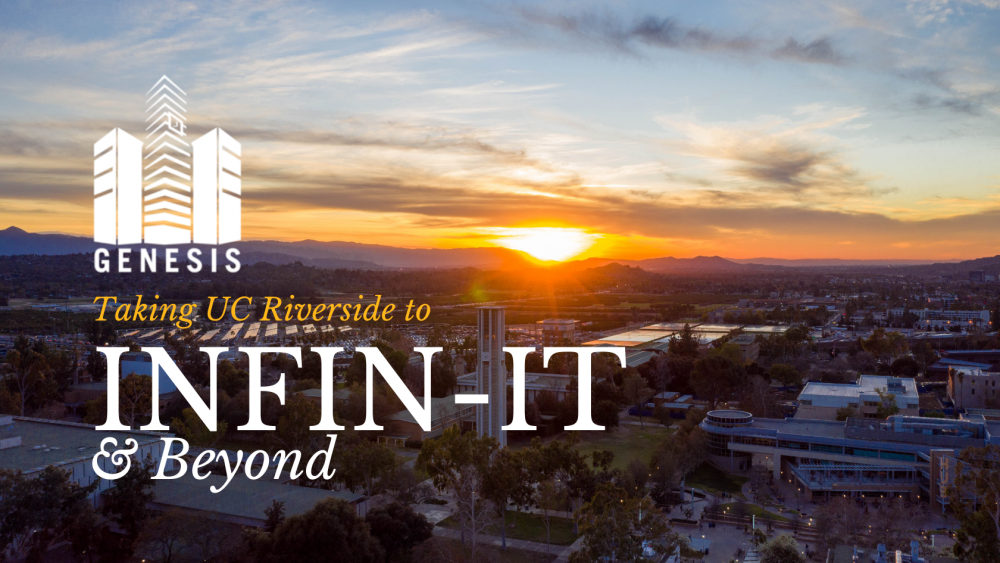By Alexandra Chrystal. The abrupt global shift to remote teaching and working in response to the coronavirus pandemic caused the Chronicle of Higher Education to postulate that “the institutions that will thrive in the future will be the ones that embrace online platforms—not just a hastily assembled, short-term replacement for classes—but long-term expansions of classroom instruction, campus life, and off-campus learning.” We are now into a “new normal” and universities around the nation are looking to invest in their technology infrastructure. So what is UC Riverside doing to remain future-fluent and invest in the needs of tomorrow?
Well before the shift from tech-enhanced learning to tech-reliant learning, UCR’s central IT organization—Information Technology Solutions (ITS)—decided to invest in a monumental effort to move the University away from its outdated, static legacy infrastructure and toward agile, scalable, future-focused infrastructure. The most apt analogy would be renovating an old house by replacing obsolete, costly, and often dangerous construction and appliances with modern architecture and appliances that meet current standards of safety, efficiency, and technology integration.
At the heart of this undertaking, called Project Genesis, is modernity. ITS has taken an out-of-date, unreliable legacy data center comprised of 52 racks of physical hardware and compacted it to just 7 racks through industry-forward re-architecture and efficiencies. The organization is currently in the process of operationalizing these racks in a leading-edge data center facility that provides greater cost and space savings, reliability, speed, scalability, redundancy, and multi-tier security.
As part of Project Genesis, ITS has updated the hardware to meet current industry standards and is making changes to the database and application architecture to better support current release standards. ITS has established a baseline of software that all applications must meet and moving forward those baselines will be updated in accordance with new standards to ensure compatibility and security.
ITS has also integrated automation into the deployment of servers. This will expedite ITS’ ability to deploy new, reliable standardized systems to meet campus needs. Moreover, the integration of state-of-the-art system monitoring will allow ITS to proactively observe and swiftly address performance incidents and security concerns.
For campus, this work will translate to vastly reduced outages, reliable data backups, improved data security, and the agility required to rapidly bring online new campus services that support the University’s mission. This infrastructure re-architecture is critical to UCR’s growth and will lay the groundwork for the University to undergo a digital transformation that advances classroom instruction, campus life, and off-campus learning.
This article originally appeared in the UC Riverside ITS Blog, November 30, 2020, and is re-posted with permission in the UC IT Blog.
 Alexandra Chrystal is communication and training manager, Information Technology Solutions, UC Riverside.
Alexandra Chrystal is communication and training manager, Information Technology Solutions, UC Riverside.







